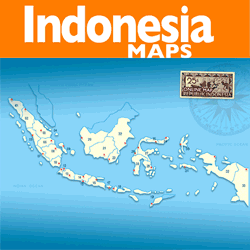Rampak Yakso Dance of Dieng Kulon Village, Banjarnegara

Dieng Plateau is the charm of Banjarnegara and Wonosobo District. Surrounded by mountains, lakes, craters, and other nature attractions, the site becomes tourists’ favorite place when visiting Central Java Province. There is another type of attraction, though. Visitors can enjoy some beautiful local dances too, especially Rampak Yakso. It is the signature performance of Dieng Kulon Village, showing a colossal entertainment to both locals and foreigners. The dance is performed either by teenagers or adults, regardless of the profession. The dance tells the story about the war between Gatotkaca and Kolo Pracono in Njuggkring Seloko (heaven).
About Rampak Yakso Dance
The dancers wear flashy attire, featuring red and black color. They even wear a wig, put some makeup, and apply false teeth that show the characteristics of buto (evil giants). When walking, the sound of small bells is heard, coming from their wrist accessory. The other dancers may wear different attire, though. Instead of wearing buto attire, they wear a costume of a white monkey hero called Hanuman. Another costume definitely symbolizes the main hero of the story, which is Gatotkaca. The one who wears such attire must have a good body shape, though.
Enjoying Rampak Yakso Dance
Usually, the dance is held during Dieng Culture Festival, but the locals also conduct in in regular days. Being called as a colossal performance, the dance is performed by several men wearing different costumes mentioned before. Apart from telling the story of the war between Gatotkaca and Kolo Pracono, the dance becomes a festive event among the locals in order to welcome the harvest session. For tourists, it is better to talk to a tour agent prior to attending the event. This way, they can avoid disappointment due to lacking information and schedule.
The fact is that Rampak Yakso Dance is performed by only men. It represents a war between the good and evil, actually. No wonder, the movements are a little bit rough and intimidating. The coolest dancer is the one that wears Gatotkaca attire. He becomes the center of attention as well. Those who wear Hanoman attire move more swiftly than the others because their role is to describe the activeness of that white monkey during the war. What about Buto? Those wearing such attire might show their scary appearance while moving in the middle of the street.
Rampak Yakso Dance also features accompaniment, especially gamelan. The sound of the bells worn by Buto dancers is also heard during the performance. All dancers move slowly in the street and head to Arjuna Temple. It is where they conduct their final performance before other events start, especially the sanctification ritual of dreadlocks. Tourists must never forget to carry a camera when enjoying the performance! It is a must.
Nearby Attractions
- Prau Mountain
- Balekambang Lake
- Gasiran Aswotomo
- Kailasa Museum
- Arjuna Temple
How to Get There
Most of the time, Rampak Yakso Dance is performed in Dieng Kulon Village and its nearby area. From Wonosobo City, travelers can ride a bus and take Dieng Raya Street to that location. Make sure to come on the right schedule, though. Otherwise, they won’t be able to enjoy the dance because no one performs it.
Where to Stay
- Puspa Indah Homestay
- Gunung Mas Hotel
- Dieng’s King Inn

Indonesia’s Heritage Collection: Van Der Wijck Fort -Kebumen
One of the many Dutch heritage forts, Van Der Wijck Fort is unique because the entire building is made of red brick. You’ve seen? This fort with an octagonal plan looks more charming with its red color, compared to Dutch forts which are generally colorless or white. It looks like the fort from the front and inside uses red bricks, but still with the characteristics of a Dutch fort in Indonesia which has a large building structure, such as windows, doors and rooms. With an area of 3606,625 square meters,…
10 Most Unique Tourist Villages in Magelang, Makes You Don’t Want to Go Home
Magelang has a number of temples as the favorite tourist destinations. Besides Borobudur, you can visit several other places, such as tourist villages. There are several tourist villages around Borobudur Temple with a unique and interesting atmosphere. In addition to saving nature, you can also get to know the culture behind it. Temanggung VillageTemanggung Village was viral because it was called Nepal van Java. The view of the village at the foot of Mount Sumbing is really epic. Tanjungsari VillageIf you are interested in the process of making honey, you…
Amazing Tourist Destinations in Jepara, Central Java
Punuk Sapi BeachPunuk Sapi Beach is also popularly known as Pantai Lemah Abang which means “red land beach”. It is named so because this beach is indeed filled with mounds to hills with red soil that at first glance looks like a cow’s hump (punuk sapi is cow’s hump in English). This beach has black sand, but it is also beautiful like the white sand beaches. There are hammocks and swings that you can use to relax, as well as take pictures from a height. This beach is located in…
Arjuna Temple, A Relic of Hindu in the Ancient Mataram Kingdom
Arjuna Temple complex is the most photographed and visited of the surviving temples on the Dieng Plateau. Situated just a few hundred meter from the homestays in Dieng village, they are an obvious first stop on a tour of the sights in the area. Though they are far from the most imposing of Javanese temples, they are the earliest surviving Hindu temples in Central Java, so they are of great importance historically. Built a century or two before the great temples around Yogyakarta and Magelang, they mark the original phase…









